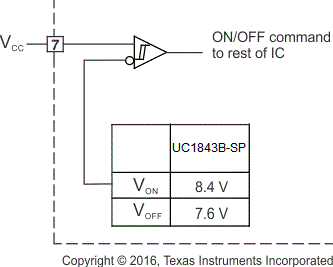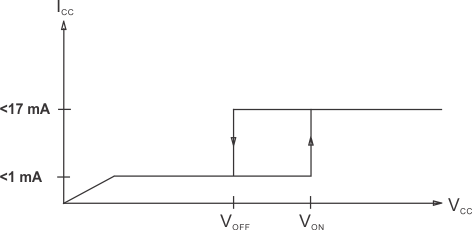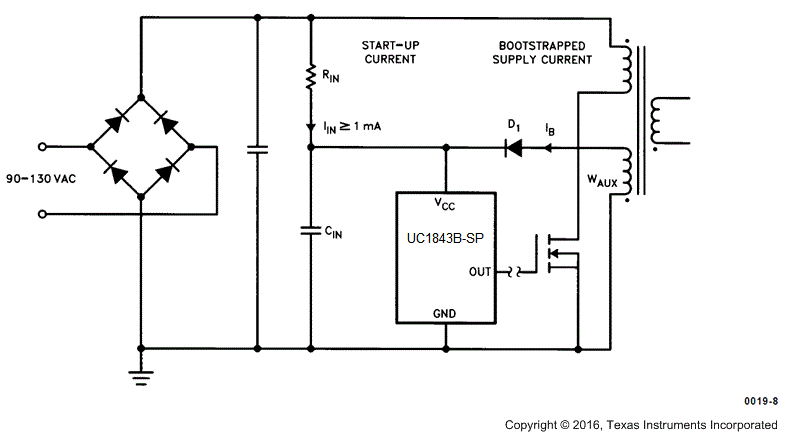JAJSH61A April 2019 – September 2019 UC1843B-SP
PRODUCTION DATA.
7.3.1 UVLO
The UVLO circuit ensures that VCC is adequate to make the UC1843B-SP fully operational before enabling the output stage. Figure 5 shows that the UVLO turnon and turnoff thresholds are fixed internally at 8.4 V and 7.6 V, respectively. The 0.6-V hysteresis prevents VCC oscillations during power sequencing.
Figure 6 shows supply current requirements. Start-up current is < 1 mA for efficient bootstrapping from the rectified input of an off-line converter, as shown in Figure 7. During normal circuit operation, VCC is developed from auxiliary winding, WAux, with D1 and CIN. However, at start-up, CIN must be charged to 8.4 V through RIN. With a start-up current of 1 mA, RIN can be as large as 100 kΩ and still charge CIN when VAC = 90-V RMS (low line). Power dissipation in RIN would then be less than 350 mW even under high line (VAC = 130-V RMS) conditions.
During UVLO, the output driver is in a low state. While it does not exhibit the same saturation characteristics as normal operation, it can easily sink 1 mA, enough to ensure the MOSFET is held off. For efficient operations, an LDO can take the place of RIN and be disabled during the operation of the device.
 Figure 5. UVLO Turnon and Turnoff Threshold
Figure 5. UVLO Turnon and Turnoff Threshold 
NOTE:
During UVLO, the output driver is biased to sink minor amounts of current. Figure 7. Providing Power to the UC1843B-SP
Figure 7. Providing Power to the UC1843B-SP